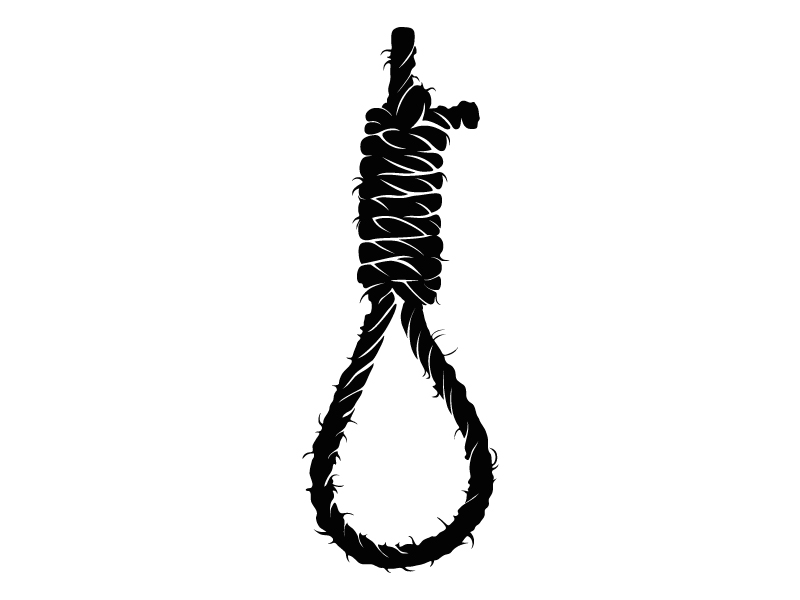
When the president rejects a convict’s mercy appeal, the countdown starts for prisoners on death row, according to the Prison Rules of 1978.
Soon after the convict’s plea is dismissed, the interior ministry is duty-bound to inform the relevant jail, whose superintendent starts the hanging process.
The first step is the jailer informing the relevant sessions or anti-terrorism court, whichever awarded the sentence, about the rejection of the mercy appeal. The superintendent also requests the court to formally issue a black warrant to allow the execution so that the sentence could physically be executed.
After a proper verification of the documents, the trial court’s judge issues the black warrant that contains the date and time of execution.

Execution timings
Under the prison rules, an execution is to be carried out in the wee hours of the day but the exact timings vary for each season. Under the prison rules, an execution during May to August is to be carried out at 4:30am. During the months of March to April and September to October, the hanging takes place at 5:30am. From November to February, executions take place at 6:30am.
The rules specify that executions cannot take place on the weekly holiday, Sunday, or any other day declared as a public holiday. Similarly, no execution takes place during Ramazan. The prison rules allow the condemned prisoner to meet his/her relatives, friends or anyone he/she wishes to meet before the hanging. Such meeting take place 24 hours before the time of hanging.
Last-minute pardon
The rules also allow the legal heirs of the victim, the person the convict killed, to attend the hanging. This is to provide a last opportunity to the convict to seek pardon. “If the legal heirs of the victim pardon the killer, he/she cannot be executed,” said Advocate Farooq Ahmed, who specialises in criminal trials.
Day of execution
Once the jailer receives the black warrants the gallows staff swings into motion. The rules make it mandatory for three important government officials, including the prison superintendent, the judicial magistrate and a doctor to be present at the time of execution.
The prison superintendent also has to supervise the hanging himself or appoint his assistant. Similarly, the relevant district and sessions judge appoints a judicial magistrate. The third important official is the medical officer, who should not be below the rank of BPS-17. The medical officer physically examines the convict before and after the hanging.
“Under the rules, a prisoner has to remain hanging for 30 minutes,” said Advocate Ahmed. Then, the medical officer examines the prisoner again to formally pronounce the death. Then, the prison superintendent prepares a report on the compliance of court orders of hanging and submits it in court.
The last walk
Once a black warrant is issued for the prisoner, the inmate is moved from his barrack to an isolated room, called the condemned cell. A doctor there keeps checking the inmate’s blood pressure and temperature. According to jail officers, prisoners can get suicidal or depressed, and that is why the doctor and the guard are on the lookout. In the prisoner’s last days spent in the cell, his family is allowed to meet whenever they want to, and he can wish to have whatever food he wants.
Most executions take place after Fajr prayers. With court permission, the family of the person the convict killed is allowed to witness the hanging. However, the convict’s family is discouraged from attending it. Only a judicial magistrate, doctors and jail officers can witness the executions.
Before heading for the gallows, the inmate takes a bath and offers prayers. Right outside the Phansi Ghaat, he is stopped by a judicial magistrate who asks him about his will and last wishes, and writes them down. “Prisoners talk about giving their belongings to their family members. Some permit their wives to marry,” said Rafiq, a jail official.
Dressed in white kameez shalwar, the prisoner is made to wear a black mask that covers his face. “[This is done] so he can’t see the site and what is going to happen to him,” said Rafiq.
The prisoner then walks up the nine steps to the gallows where someone, like Ahmed, ties the noose around their neck and their feet. The prisoner recites the Kalma. The superintendent standing across the gallows checks the time, throws down a handkerchief. This tells the officer to pull the lever. The prisoner is hanged.
After five minutes, the three doctors on spot check him one by one. The prisoner is pulled down and laid on a stretcher. Before his body is handed over to his family, his official clothes, the white attire is removed and he is changed into the ones provided by his family.
Published in The Express Tribune, December 21st, 2014.
1732434981-0/BeFunky-collage-(10)1732434981-0-405x300.webp)
















COMMENTS
Comments are moderated and generally will be posted if they are on-topic and not abusive.
For more information, please see our Comments FAQ